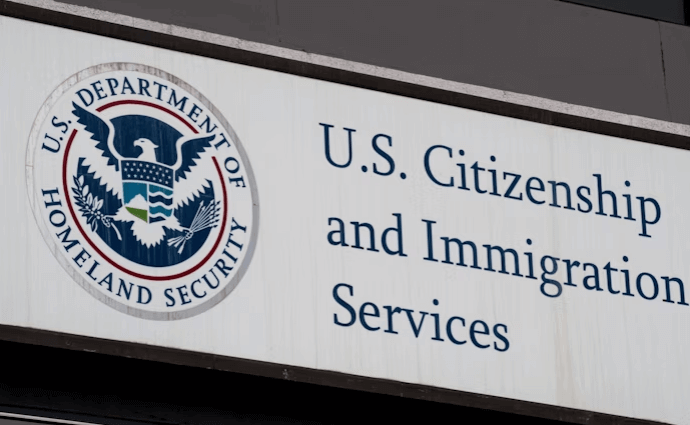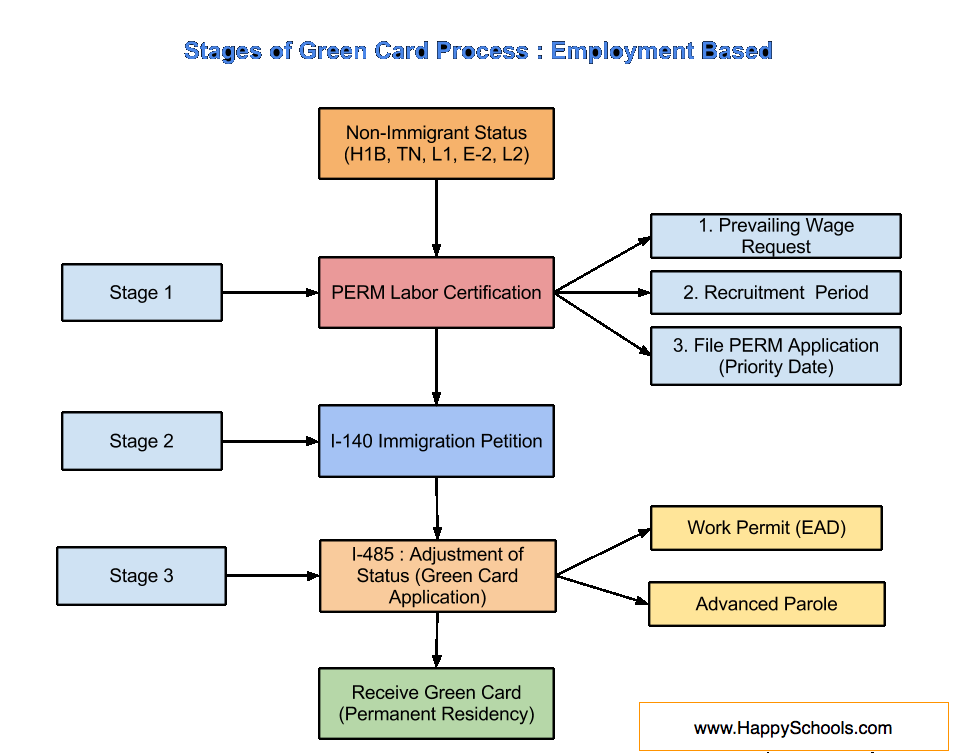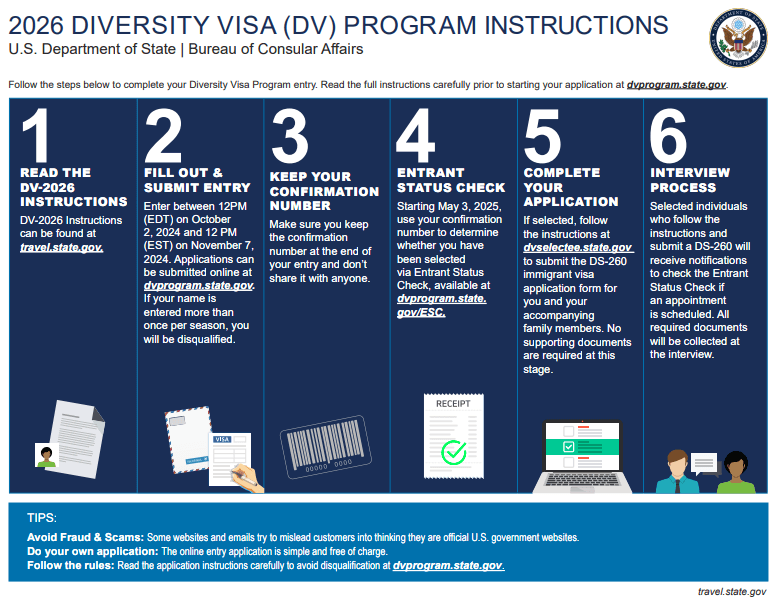According to the Office of Homeland Security Statistics (OHSS), an average of 1.1 million green cards, also known as permanent residence cards, are issued every year, with applications based on marriage accounting for less than 30% of approvals. As U.S. immigration policies evolve under the 2025 Trump administration, alternative pathways like employment visas and humanitarian protections are becoming critical. This guide will explore updated strategies in 2025 to legally obtain permanent residency without relying on a spouse.
Understanding U.S. Immigration Policy in 2025
The 2025 Trump administration reinstates and expands restrictive immigration measures, including:

- Revived policies: Ending “catch and release,” requiring asylum seekers to wait in Mexico, expanding expedited removal nationwide, increasing detention capacity, and restricting refugee admissions.
- New measures: Declaring a border “invasion” to justify military deployments, ending birthright citizenship for children of undocumented or temporary-status parents, terminating Biden-era humanitarian parole programs, and designating cartels as terrorist organizations.
- Project 2025 priorities: Mandating ICE Immigration and Customs Enforcement) raids in sensitive locations (schools/hospitals), eliminating Temporary Protected Status (TPS) and Deferred Action for Childhood Arrivals (DACA), enforcing E-Verify, and mobilizing state/local law enforcement for federal immigration enforcement.
Legal Pathways to a Green Card Without Marriage 2025
Marriage-based green card route seems to be the easiest but not the only pathway. It is also possible to gain US permanent residence through employment, non-marriage familial connections, humanitarian protections, unique immigration programs, or special immigrant status.
Employment-Based Green Cards
Aiming to attract talents and professionals from all over the world, the US government might issue green cards to eligible foreign employees, investors, and entrepreneurs who make great contributions to the US economy and culture. Here are the common sub-categories of employment-based (EB) green cards.

EB-1: Extraordinary Ability, Researchers, Executives
It is designed for individuals with extraordinary abilities or talents, such as outstanding researchers, managers/executives of a multinational corporation, renowned actors/actresses, scientists, educators, or athletes. Under this category, you can file the application yourself without the employer’s petition.
EB-2: Advanced Degree or Exceptional Ability (Including NIW)
It is set for individuals with advanced degrees (master’s degree or above, or bachelor’s degree plus 5-year work experience) or exceptional abilities in certain fields (i.e., sciences, arts, or business). Under this category, you usually need to obtain a job offer first and have their employers petition on their behalf unless you qualify for the National Interest Waiver (NIW) program.
EB-3: Skilled Workers and Professionals
Skilled workers and professionals fall into the EB-3 category. Applicants should have at least 2+ years of job experience or training or a bachelor’s degree (or equivalent). The employer should obtain a PERM labor certification from the US Department of Labor (DOL) to prove the necessity of hiring a foreign employee for the position and then file the petition for the employee.
EB-4: Special Immigrants
Qualified applicants include religious workers, special immigrant juveniles, media professionals, certain foreign employees serving in US government abroad as well as their family, retired or in-service international organization employees, members of the US armed forces, Panama Canal company or Canal Zone government employees, certain physicians, or others contributing to the US national security. The employer or organization should petition for the employee unless otherwise specified.
EB-5: Investment Visa
It is launched for investors as well as their spouses and unmarried children under 21. Applicants must make the necessary investment in a commercial enterprise in the US and provide 10 permanent full-time job opportunities. The standard minimum investment amount should be $1.8 million (in most cases) or $900,000 (in certain targeted employment area (TEA)). Please note that the threshold is tied to inflation and will be changed every few years.
Family-Based Green Cards (Non-Marriage)
If you’re a US citizen or lawful permanent resident (green card holder), sponsoring close relatives for permanent residency is a favorable option outside of the marriage route. This pathway splits into two tiers.
Immediate Relatives
It refers to spouses, unmarried children under 21, and parents of an adult US citizen. The process is streamlined with no annual caps, ensuring faster approvals (typically 12-24 months).
Family Preference Categories
It refers to more distant relatives, such as adult children, siblings, and married children of US citizens. There is a limited annual quota under this subcategory, thus extending the waiting time to decades.
Humanitarian Protections
People who face persecution or worry about personal safety in their home countries can apply for a green card and seek humanitarian protection, but 2025 policy changes under the Trump administration have significantly tightened access. This pathway is divided into two subcategories.
Asylum seekers
Applicants must now prove a “credible fear” of persecution based on race, religion, political views, or social group membership under stricter scrutiny, with expedited removal expanded nationwide. New rules also suspend asylum processing at the border for most applicants, forcing many to wait in Mexico indefinitely.
Refugee admissions
Refugees are individuals who are forced to leave their home country due to war, political or religious beliefs, or natural disasters. Applicants must be referred by the United Nations High Commissioner for Refugees (UNHCR) or similar to obtain refugee status and then apply for a green card one year later. Please note that in 2025, refugee admissions face severe restrictions, including capped quotas and enhanced vetting that delays resettlement. Notably, Biden-era humanitarian parole programs for vulnerable groups (e.g., Ukrainians and Venezuelans) were terminated. Additionally, Temporary Protected Status (TPS) designations are being revoked, putting long-term residents at risk of deportation.
Diversity Visa Lottery (DV-2027)
The Diversity Visa (DV) Lottery offers a rare chance to secure a U.S. green card without family ties or employment sponsorship. Designed to diversify immigration, the program allocates 50,000 visas every year to applicants from countries with historically low U.S. immigration rates.

To qualify, you must have at least a high school diploma or two years of work experience in a qualifying occupation. The registration period will start from October 5, 2025, to November 8, 2025, for DV-2027. Winners who are chosen randomly can apply for a diversity visa to enter the US. While the Trump administration’s 2025 policies focus on border enforcement and asylum restrictions, the DV Lottery remains unaffected for now. However, there will be heightened scrutiny during visa processing.
Long-Term Residency Alternatives
Individuals who have physically lived in the United States for consecutive years might be eligible for permanent residency. In this case, they can transition from a temporary visa or residence permit to a green card. For example, employers can sponsor EB-2 or EB-3 petitions for H-1B holders who have been living in the US for 6 years. O-1 visa holders (for extraordinary ability) may qualify for the EB-1A category, bypassing PERM and employer sponsorship if they meet criteria like awards or industry impact. L-1 executives/managers can transition via EB-1C, provided their employer operates U.S. and foreign branches.
How to Get a Green Card in the USA without Marriage
The application process for a green card differs widely according to the pathway. No matter which one you choose, you have to go through the following procedures.
Choosing the Right Pathway
Choosing the right pathway can increase the chance of approval and accelerate the processing.
| Pathway | Best for |
| Employment-Based Green Cards (EB-1) | People with extraordinary ability, researchers, or executives |
| Employment-Based Green Cards (EB-2) | People with advanced degree or exceptional ability (including NIW) |
| Employment-Based Green Cards (EB-3) | Skilled workers and professionals |
| Employment-Based Green Cards (EB-4) | Special immigrants |
| Employment-Based Green Cards (EB-5) | Investors and entrepreneurs |
| Family-Based Green Cards | Children, parents, and siblings of an adult US citizens or LPR |
| Humanitarian Protections | Asylum seekers, Refugee admissions |
| Diversity Visa Lottery Program | People from countries with historically low U.S. immigration rates & without specialized skills |
| Immigration status change | Long-term residents in the US |
Prepare Necessary Documentation
Each pathway demands tailored evidence. The required documents are quite different for each pathway. Here are the official requirements for each category.
| Pathway | Application Process | Required Documents Checklist |
| EB-1 | Consular processing with the U.S. Department of State (Employers or employees petition – Form I-140) | Check here. |
| EB-2 | Consular processing with the U.S. Department of State (employer’s petition – Form I-140) | Check here. |
| EB-3 | Consular processing with the U.S. Department of State (employer’s petition – Form I-140) | Check here. |
| EB-4 | Consular processing with the U.S. Department of State (employer’s petition – Form I-360 or self-petition – Form I-140) | Check here. |
| EB-5 | Consular processing with the U.S. Department of State (self-petition – Form I-526) | Check here. |
| Family-Based Green Cards | Consular processing with the U.S. Department of State (sponsor petition – Form I-130) | Check here. |
| Humanitarian Protections | Adjustment of status with USCIS (Form I-485) | Check here. |
| Diversity Visa Lottery Program | Consular processing with the U.S. Department of State (self-petition – Form DS-260) | Check here. |
| Immigration status change | Adjustment of status with USCIS (Form I-485) | Check here. |
Fill out the forms
Most green card applicants will need to complete at least two forms, one for the immigrant petition and another for the Green Card application. The application forms are used to gather personal information, passport details, family ties, biometrics, etc. All the information provided must be authentic, accurate, and updated. Here are the most common forms.
| Form I-140, Immigrant Petition for Alien Worker | Employment-based Green Card Applications |
| Form I-360, Petition for Special Immigrants, Americans, Widows or Widowers | Employment-based Green Card Applications (EB-4) |
| Form I-130, Petition for Alien Relative | Family-based Green Card Applications |
| Form I-589, Application for Asylum and for Withholding of Removal | Humanitarian Green Card Applications |
| DS-260, Online Immigrant Visa Application | DV Lottery winners |
| Form I-485, Adjustment of Status | Transition from a visa to a green card |
Attend Interview and Wait for Approval
After submitting the application, you might be invited to have an interview at the US embassy/consulate or USCIS office. It focuses on capturing your biometrics (including fingerprints, photos, and signatures) and verifying application authenticity. Employment applicants may face questions about job roles or employer legitimacy, while asylum seekers must articulate their persecution narratives convincingly. It is suggested to prepare for the common questions in advance and dress properly to attend the appointment as scheduled. Just make sure to answer all the questions honestly and concisely. After the interview, USCIS may take 6–24 months to make decisions.
FAQ
- What is the fastest way to get a green card?
EB-5 usually takes shorter than other pathways as it does not require employer sponsorship or specific skills. All you need to do is to meet the investment capital requirements.
- How long will the EB-5 process take in 2025?
2-5 years, and the processing time might vary from country to country.
- What are the eligibility criteria for the Diversity Visa Lottery as a pathway to a Green Card?
A3: Applications must come from a country with historically low immigration rates to the US and have a high school education or 2 years of designated work experience. For more details, please check here.
- Is the Diversity Visa Lottery free to sign up?
Yes. The authority does not charge any fees to submit an entry, but lottery winners must pay application fees and possible service fees to apply for the visa.
Summary
There are multiple ways to apply for a US green card even without marriage. General immigration policies, including employment-based pathways, family-based pathways, humanitarian protection, and special immigration programs, remain in effect under the 2025 Trump administration. No matter which one you choose, make sure to check the latest policy priorities and meticulously prepare the applications. We hope you will turn your American residency dream into reality and enjoy a new life soon.